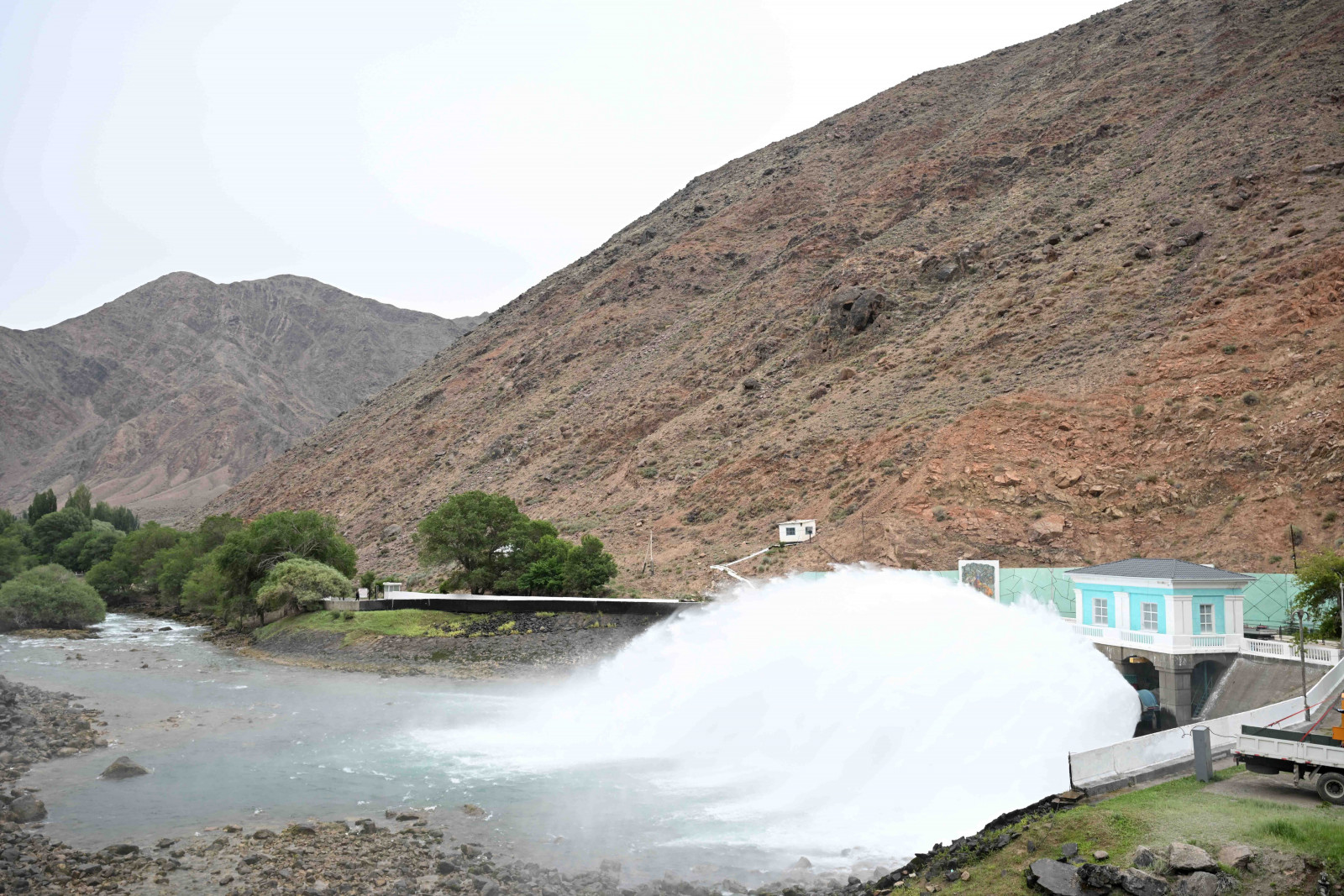BAKU, Azerbaijan, October 17. Central Asia is actively discussing the use of nuclear energy. On October 6, Kazakhstan held a referendum in which 71.12 percent of citizens supported the construction of a nuclear power plant (NPP). In Uzbekistan, a small nuclear power plant is already under construction in the Jizzakh region based on a Russian project, and in October 2023, Rosatom expressed its readiness to discuss building an NPP in Tajikistan.
As for Kyrgyzstan, in 2022, Russian Rosatom and the country's Ministry of Energy signed an agreement for the construction of a small NPP. This May, Rosatom announced that the preliminary justification for a small NPP with a RITM-200N reactor, capable of generating 110-330 MW, was already prepared. The authorities are searching for a suitable location for the plant.
A small NPP could help address Kyrgyzstan's energy shortages. In 2023, the energy deficit reached 3.2 billion kilowatt-hours. Projections for 2024 indicate that the country could generate up to 14.2 billion kWh of electricity, an increase of 2.5 percent from 2023. In 2023, Kyrgyzstan imported 3.5 billion kWh, 24 percent more than in 2022.
Over 90 percent of the country's electricity is generated from hydropower plants (HPPs). To boost production, small HPPs with a total capacity of 43.06 MW were launched in the first half of 2024. Additionally, a floating solar power plant was commissioned at the "TEC-5" reservoir. However, existing capacities are insufficient, prompting a consideration of all options for increasing energy sources, including the construction of nuclear plants.
At the same time, this June, President of Kyrgyzstan Sadyr Zhaparov lifted a ban on the extraction of uranium and thorium, which had been in place since 2019. Officials state that there are no plans to mine uranium; however, the ban hindered the extraction of other rare metals, such as titanium magnetite found at the Kyzyl-Ompol mine. According to the State Committee for Industry, Energy, and Subsoil Use of Kyrgyzstan, explored uranium reserves amount to 3,500 tons. Thus, if the authorities' stance changes and uranium extraction is authorized, it may even be used for the new NPP, making the presidential decree significant.
Kyrgyzstan still feels the effects of the uranium industry established during the Soviet era in the 1940s to 1960s. The Ministry of Natural Resources, Ecology, and Technical Supervision reports that there are 92 radioactive sites in Kyrgyzstan, including 33 tailings storage facilities. Rosatom is involved in the remediation of these sites. Therefore, the construction of a small NPP and potential uranium extraction raise new questions about the safe disposal of nuclear waste.
For instance, on September 2, a dump truck from a local subcontractor veered off the road while transporting soil from the Tuyuk-Suu tailings in the Naryn region. A source in Rosatom said that "the consequences of the incident have been addressed, and radiation levels in the surrounding area are normal". However, such incidents highlight existing risks. The prospect of building a NPP in a seismically active region also raises concerns. Therefore, involving the public in discussions about nuclear initiatives is crucial.
The Kyrgyz Ministry of Energy said that citizens' opinions will be considered in the construction of the NPP, and "a final decision will only be made after public consultations". Authorities emphasize that if the project proceeds, it will not be in the near future.
Currently, there is only a framework agreement, with clear timelines and investments still uncertain. At this stage, determining the necessary funding for the small NPP in Kyrgyzstan is challenging, but based on experiences from neighboring countries, constructing a nuclear facility will be expensive.
For example, Russia is building a 330 MW small NPP in Uzbekistan (on the basis of a similar reactor, it is planned to build a NPP in Kyrgyzstan), with an estimated project cost of around $11 billion, according to Rosatom data from 2018. In Kazakhstan, a NPP with a capacity of up to 2,800 MW is estimated to cost within $10–12 billion. It's also important to consider that expenses for such projects typically increase as they progress.
Thus, Kyrgyzstan will require significant funding for NPP construction. Rosatom finances its projects through loans, which could make Kyrgyzstan dependent on Russia. Additionally, as of July 31, the country's external debt amounted to $4.57 billion.
Kyrgyzstan also has other energy projects with higher chances of success, as practical steps have already been taken. The largest of these is the Kambarata HPP-1. Preparations for its construction are nearly complete, with plans to begin in 2025 and to commission the first hydropower unit in 2028. The preliminary cost of the HPP is estimated at $4.5–5 billion, with a capacity of 1,860 MW. Kambarata HPP-1 is expected to generate 5.6 billion kWh annually. The donor coordination committee for the construction includes the World Bank, European Bank for Reconstruction and Development, OPEC Fund, Asian Development Bank, Asian Infrastructure Investment Bank, and Islamic Development Bank.
Moreover, President Zhaparov is actively discussing with other countries and international financial organizations the idea of swapping external debt for environmentally friendly projects, particularly focusing on building HPPs and utilizing wind and solar energy. According to the President, Kyrgyzstan currently utilizes only about 10 percent of its hydropower potential.
As a result, Kyrgyzstan, with its limited financial resources, will likely need to choose between energy projects. If the Kambarata HPP-1, small HPPs, and solar and wind power plants are successfully constructed, the necessity for a small NPP may diminish. Given the concrete steps already taken toward building the hydropower plants, while the NPP project is still at a basic agreement stage, the Kambarata HPP-1 appears to be a more promising option for the country.







